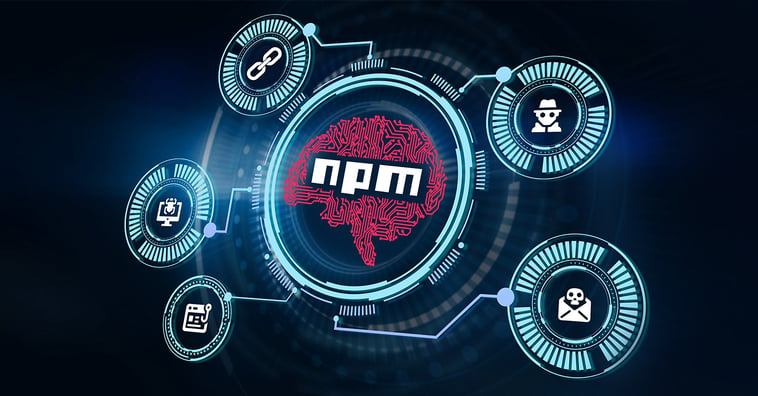Threat Research
Threat Research

Malware in images: When you can’t see 'the whole picture'
Learn moreThreat Research

Code obfuscation — Intentionally altering a software application's source code to make it more difficult for humans to understand while retaining its functionality. It involves applying various transformations to the code, making it challenging for reverse engineers and attackers to analyze, modify, or exploit the application. Code obfuscation is commonly used in software development to protect intellectual property, prevent reverse engineering, and enhance security.
Security enhancement: Code obfuscation allows developers to effectively thwart unauthorized access attempts and safeguard sensitive information from potential cyberthreats. It involves altering the source code in ways that retain the application's functionality while introducing complexities that make it challenging for unauthorized parties to understand the code's underlying structure and logic.
Intellectual property protection: Software developers invest considerable time and effort in crafting proprietary algorithms and logic that define the core functionality of their products. The result is valuable intellectual assets that differentiate their software from competitors and contribute to competitive advantage. By obfuscating the code, developers create barriers that prevent competitors from easily reverse engineering and stealing these essential components. As a result, code obfuscation becomes a proactive measure to reduce the risk of intellectual property theft and counterfeiting, which could otherwise lead to a drop in market position and financial losses.
Prevention of reverse engineering: Besides protecting intellectual property, code obfuscation is a robust defense against attempts at reverse engineering the software. Reverse engineering involves disassembling and analyzing a software application's code to uncover vulnerabilities or weaknesses that could be exploited for malicious purposes. Developers introduce complexities that significantly impede the reverse-engineering process through code obfuscation. The obfuscated code becomes convoluted and challenging to understand, discouraging potential attackers from dedicating the time and resources required to identify vulnerabilities and craft exploits. By thwarting reverse-engineering attempts, code obfuscation contributes to the overall security posture of the software application, making it less susceptible to exploitation by malicious actors.
Regulatory compliance: Code obfuscation helps in meeting regulatory compliance mandates for using such measures to ensure data privacy and security. Compliance standards and regulations require robust security measures to protect user information from unauthorized access and manipulation in sectors handling sensitive user data, such as finance, healthcare, or government. Code obfuscation provides an additional defense against unauthorized data access attempts, helping businesses meet regulatory requirements and safeguarding user privacy.
Anti-piracy measures: By obfuscating critical parts of the code responsible for licensing and copy protection, developers can make it harder for unauthorized users to crack or bypass licensing mechanisms, reducing software piracy.
Software size optimization: In some cases, code obfuscation can lead to code size optimization, making the software smaller and more efficient. Obfuscation can contribute to faster load times and lower memory usage by removing unnecessary metadata and redundant information.
Enhanced performance and speed: Through code obfuscation, developers can optimize code paths and eliminate redundant operations, improving performance. The software can run more efficiently by reducing the number of instructions and controlling flow complexity.
Secure key storage: In applications that employ cryptographic algorithms, it is necessary to secure the storage of sensitive cryptographic keys. Code obfuscation prevents attackers from stealing these crucial keys and performing malicious activities. By obfuscating the code responsible for key management, developers obscure the location and format of the cryptographic keys, making it challenging for malicious actors to extract them from the application's binary. This proactive security measure significantly enhances the resilience of cryptographic systems, ensuring that sensitive data remains protected from unauthorized access and potential data breaches.
Malware: Malicious actors can use code obfuscation techniques to hide malware and evade detection by security software. With obfuscated code, malware is more challenging to analyze, making it harder for antivirus solutions to recognize and block it.
Botnets and command-and-control servers: Code obfuscation can be employed to conceal the operations of botnet C2 servers. Obfuscated code makes it difficult for security analysts to identify and disrupt the communication channels used by botnets, prolonging their effectiveness.
Malicious payloads: Attackers can obfuscate malicious payloads in web-based attacks, email attachments, or infected files. This technique bypasses security measures and deceives users into executing malicious code.
Exploit kits and malicious scripts: Exploit kits often use code obfuscation to conceal the exploit code within web pages or malicious scripts. Obfuscation makes it harder for security scanners to detect the exploit, increasing the chances of successful attacks against vulnerable software.
Protecting intellectual property: Code obfuscation is crucial in protecting intellectual property by safeguarding the proprietary code that defines a software application's algorithms and logic. This proprietary code is the backbone of a company's software product and represents a significant investment in research, development, and innovation. Through code obfuscation, developers introduce complexities and transformations that make it difficult for unauthorized parties, including competitors, to understand and replicate the underlying code. By effectively shielding intellectual property from prying eyes, code obfuscation ensures that the company retains a competitive edge, preserves its market advantage, and prevents potential losses from theft or unauthorized use.
Building customer trust: Cybersecurity has become a top concern for customers and partners. Demonstrating a commitment to security is essential for building and maintaining customer trust. By incorporating code obfuscation into software development, companies signal their dedication to protecting customer data, proprietary information, and sensitive operations. Customers are more likely to trust and choose companies that take robust security measures, knowing that their data and privacy are being safeguarded. Additionally, partners and stakeholders are more likely to collaborate with a company that prioritizes security, which signifies a responsible and reliable approach to business practices.
Reducing financial loss: Unauthorized access and software piracy can lead to significant financial losses for software producers. When a software application's code is left unprotected, it becomes vulnerable to reverse engineering and unauthorized access, leading to potential breaches and data theft. Additionally, unlicensed use and distribution of software can result in revenue leakage and diminished sales. By employing code obfuscation, companies can mitigate these risks by introducing layers of protection that make it challenging for attackers to understand and manipulate the code. This protection reduces the likelihood of unauthorized access, software piracy, and associated financial losses, ensuring a more sustainable revenue stream for the company.
Avoiding legal issues: Failure to comply with industry-specific regulations and data privacy laws can expose a company to severe legal liabilities, fines, and reputational damage. Code obfuscation can play a role in maintaining regulatory compliance by bolstering the security of software applications and protecting sensitive data. By implementing code obfuscation measures, companies can demonstrate their commitment to data privacy and security, reducing the risk of legal repercussions and potential data breaches. This proactive approach safeguards the company's reputation and instills confidence in customers, partners, and regulatory bodies.


